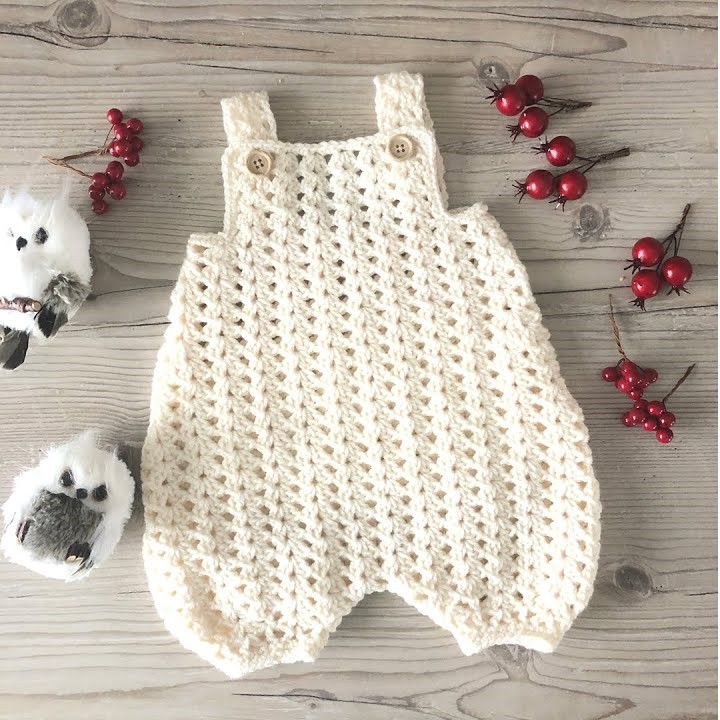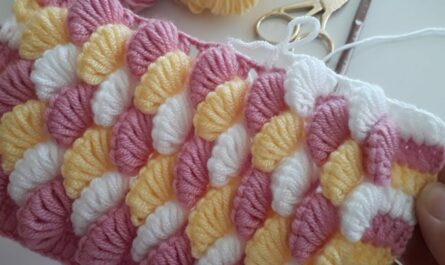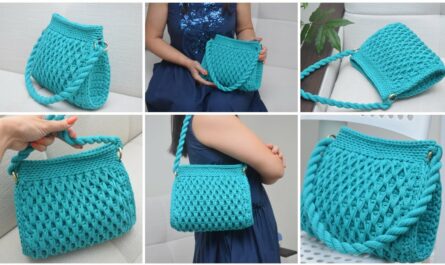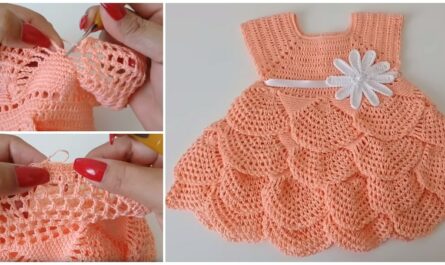Whimsical Charm & Cozy Comfort: Crocheting Your “Alice” Inspired Baby Romper
There’s something truly enchanting about dressing a little one in handmade clothes, and a crocheted baby romper brings together comfort, practicality, and undeniable charm. For those seeking a touch of whimsy, an “Alice” inspired romper evokes a classic, delicate, and perhaps slightly vintage aesthetic, reminiscent of storybook innocence. Imagine soft pastels, gentle ruffles, delicate lace, or a sweet bib front – all crafted with love.
This detailed guide will walk you through the essential steps and design considerations for crocheting a beautiful and comfortable baby romper, adaptable for sizes from 0-3 months up to 12 months, with special tips on incorporating that distinctive “Alice” aesthetic.
Why Crochet an “Alice” Romper?
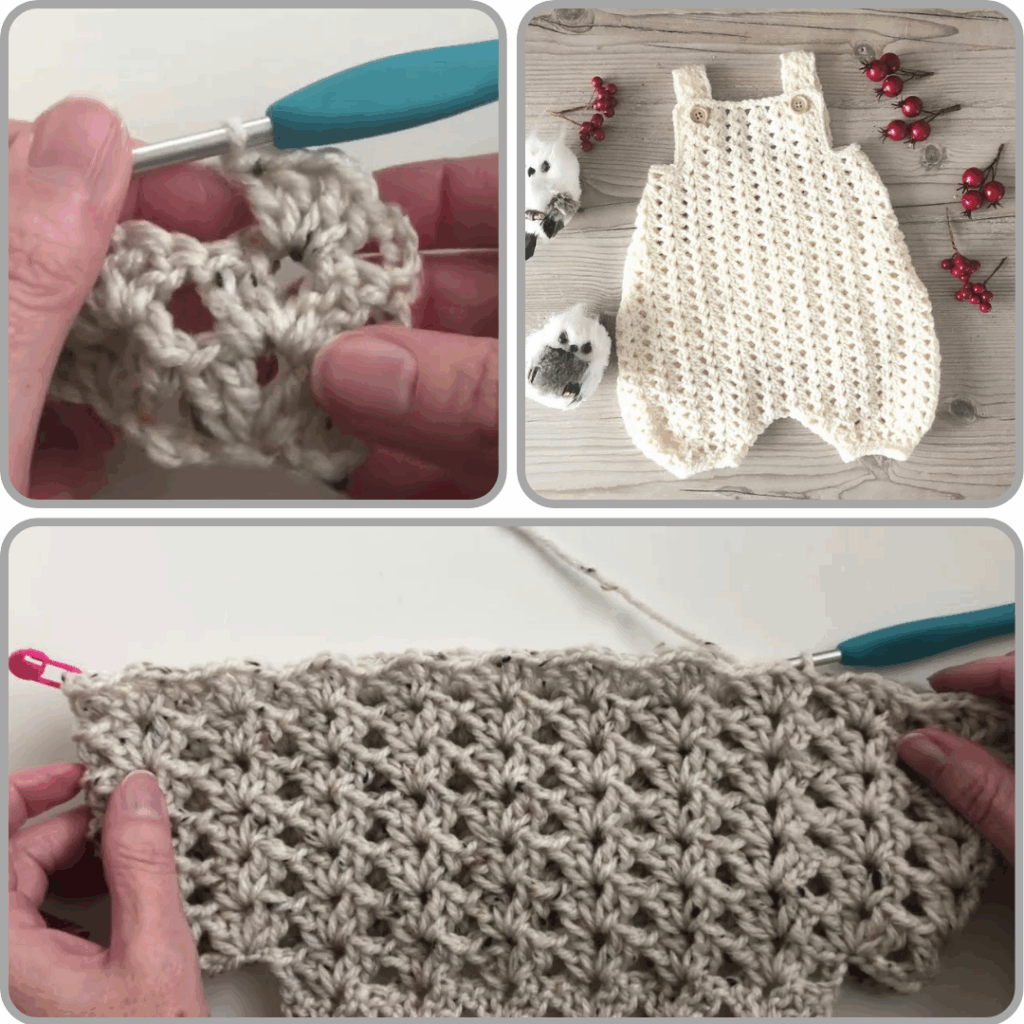
- Unique & Personalized: A handmade romper is a one-of-a-kind garment that stands out from mass-produced items.
- Ultimate Comfort: Crocheted fabrics are inherently soft and pliable, conforming gently to a baby’s delicate skin without bulky seams (especially with seamless construction).
- Heirloom Potential: A beautifully crafted romper can become a cherished keepsake, passed down through generations.
- Design Versatility: The “Alice” aesthetic is wonderfully adaptable, allowing for simple elegance or playful details like ruffles, small collars, or lace edges.
- Practicality: Rompers are fantastic for busy parents – they stay put during active play and make diaper changes easier with well-placed closures.
Key Elements of a Crochet Baby Romper:
A standard romper typically comprises several interconnected components:
- The Bodice/Top: This can be a seamless yoke (round or raglan), a separate bib front attached to a simple back, or a basic sleeveless top.
- The Bottoms/Bloomers: The lower half of the romper, designed to comfortably accommodate a diaper, often with gathered or elasticized legs.
- Shoulder Straps/Sleeves: Depending on the design, the romper might have simple shoulder straps, cap sleeves, short sleeves, or even long sleeves for cooler weather.
- Closures: Essential for dressing and diaper changes, typically buttons on the back, shoulders, and/or at the crotch.
- “Alice” Aesthetic Elements: These are the special touches – delicate ruffles, small collars, lace details, bow accents, a classic color palette (light blue, white, cream, soft pink, pale yellow).
Choosing Your Tools & Materials:
Selecting the right supplies is crucial for a soft, safe, and beautiful baby garment.
- Yarn (Prioritize Softness & Washability!):
- Fiber:
- 100% Cotton: Excellent for breathability, absorbency, softness, and great stitch definition. Ideal for warmer climates.
- Superwash Merino Wool: Luxuriously soft, provides warmth without bulk, and is conveniently machine washable for busy parents.
- Baby-Specific Acrylic: Many modern acrylic yarns are incredibly soft, durable, hypoallergenic, and very easy to care for (often machine wash and dry).
- Weight: DK (Double Knitting) or Sport Weight are highly recommended. They create a delicate yet sturdy fabric that is perfect for baby clothes.
- Color: To capture the “Alice” feel, opt for soft pastels like sky blue, classic white, ivory, cream, soft blush pink, or pale yellow. Delicate variegated yarns can also work if they maintain a gentle palette.
- Quantity: For a 0-12 month romper, you’ll typically need between 200-400 yards (approx. 180-360 meters) of yarn, depending on the size, stitch pattern, and whether you add significant ruffles.
- Fiber:
- Crochet Hook:
- Your chosen yarn label will suggest a hook size (e.g., 3.5mm, 4.0mm).
- Crucial: The correct hook size for your gauge is more important than the label’s suggestion. You will likely need to adjust your hook size (up or down by half a size) to achieve the recommended gauge.
- Other Notions:
- Stitch Markers: Essential for marking raglan lines, beginning of rounds, or specific shaping points.
- Tapestry Needle: For neatly weaving in ends.
- Scissors.
- Small Buttons: 3-6 small, flat buttons (approx. 0.5 inch / 1.25 cm) for back or shoulder closures. Choose delicate ones that complement your yarn.
- Optional: Snaps (for a crotch closure for easier diaper changes), thin ribbon for bows.
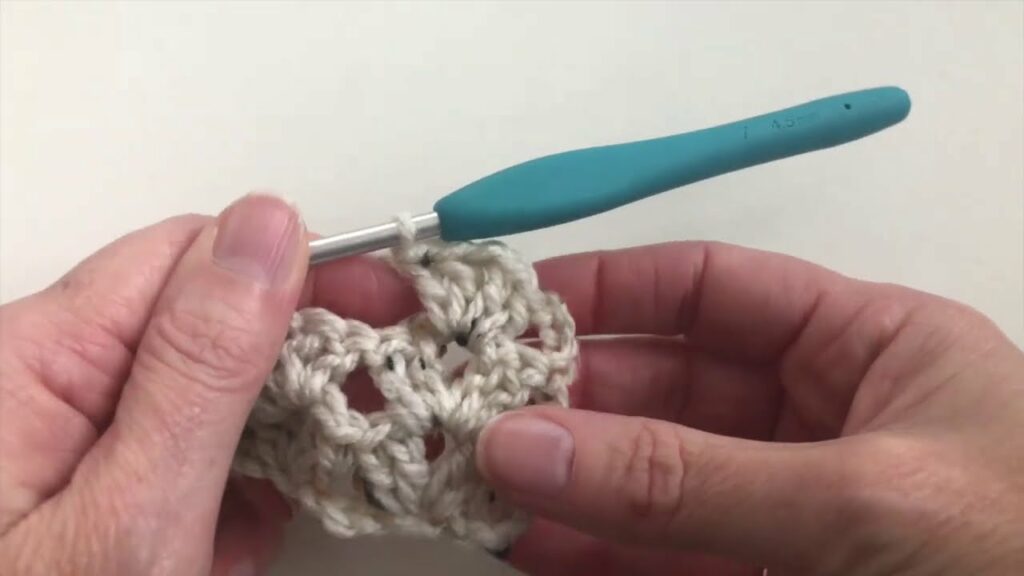
Understanding Sizing & Gauge (The Key to a Perfect Fit!)
For a baby romper, a precise fit is essential for comfort and appearance.
Approximate Baby Measurements (Guidelines for Fit):
| Size | Approx. Chest Circ. | Approx. Shoulder-to-Crotch Length |
|---|---|---|
| 0-3 Months | 16-18 inches | 12-14 inches |
| 3-6 Months | 18-20 inches | 14-16 inches |
| 6-12 Months | 20-22 inches | 16-18 inches |
Export to Sheets
Disclaimer: These are averages. Always refer to a specific knitting pattern for precise stitch counts and measurements for your chosen size.
How to Make a Gauge Swatch (Do NOT Skip This!):
- Chain: Chain about 20-25 stitches, plus the turning chains (e.g., ch 3 for dc) as per your chosen main stitch.
- Work: Crochet a square of at least 6×6 inches (15×15 cm) in the main stitch pattern you’ll be using for the romper (e.g., double crochet). A larger swatch provides a more accurate measurement.
- Wash & Block: Fasten off your swatch. Crucially, wash and block your swatch exactly as you plan to treat the finished romper. This step relaxes the fibers and reveals the true stitch size and drape, which can change significantly after washing.
- Measure: Once dry, lay the swatch flat. Place a ruler over the center. Count how many stitches fit within 4 inches (10 cm) and how many rows fit within 4 inches (10 cm).
- Adjust:
- If you have more stitches per inch than your pattern (or desired gauge) states (your work is too tight), go up half a hook size and try again.
- If you have fewer stitches per inch than your pattern states (your work is too loose), go down half a hook size and try again.
- Repeat until your gauge precisely matches.
General Stitch Patterns for an “Alice” Romper:
- Main Body:
- Double Crochet (dc): Works up quickly, creates a soft, draped fabric, ideal for rompers.
- Half Double Crochet (hdc): Creates a slightly denser fabric, good for structure.
- “Alice” Aesthetic Accents (for ruffles, edges, collars):
- Shell Stitch: (e.g., 5 dc in one st, skip 2, sl st) Creates a beautiful, scalloped, frilly edge, perfect for a vintage look.
- Picot Stitch: (ch 3, sl st into 1st ch) Creates delicate points for edging.
- V-Stitch: (dc, ch 1, dc in same st/sp) Creates a simple, delicate openwork pattern.
- Front Post/Back Post Double Crochet (fpdc/bpdc): Excellent for creating defined ribs for waistbands, cuffs, or even a small stand-up collar.
- Simple Lace/Eyelet Rows: (e.g., dc, ch 1, skip 1 st, dc) interspersed in the body for a delicate look.
Step-by-Step Construction: The “Alice” Inspired Baby Romper (Top-Down Yoke + Bloomer Bottoms)
This outline provides the fundamental steps for a classic top-down romper with a back opening. For exact stitch counts and specific design elements (like collar shaping or intricate lace), you will need to refer to a detailed crochet pattern for the 0-12 month size.
Phase 1: The Yoke/Bodice (Top-Down & Seamless)
We’ll use a raglan yoke, working flat initially for a back opening.
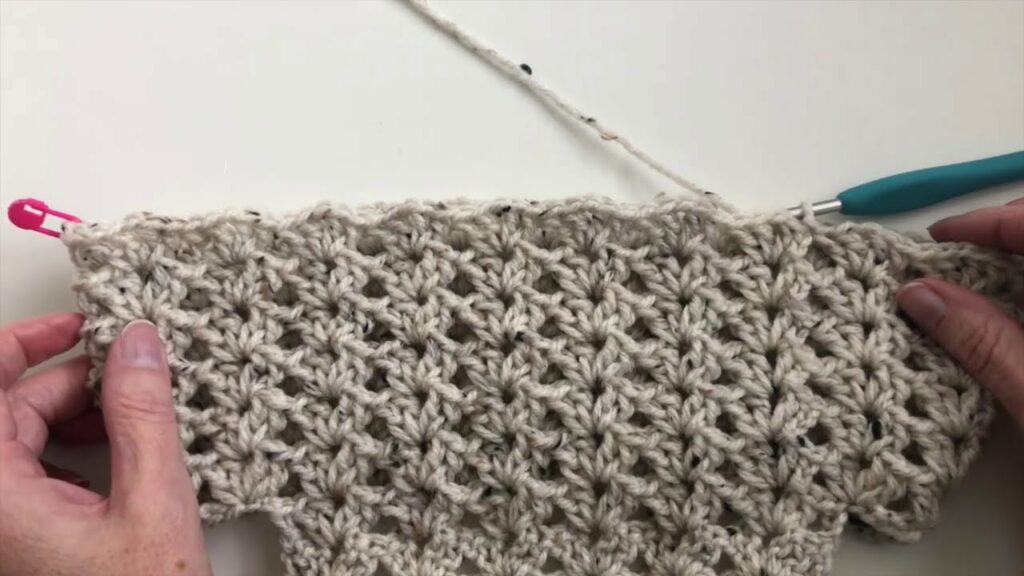
- Step 1.1: Starting the Neckline & Back Opening
- Foundation Chain: Chain the number of stitches specified by your pattern for the neckline (e.g., 40-60 stitches).
- Neckband Rows: Ch 2 (counts as first hdc, or ch 1 for sc). Work 1 hdc (or sc) in the 3rd ch from hook and in each ch across. Turn. Work 2-3 more rows of hdc (or sc) to create a stable, neat neckband.
- Buttonholes (Optional): On one of the back placket edges (usually the wearer’s right side for easy dressing), you’ll create small buttonholes. A common placement is near the top, middle, and bottom.
- To make a simple horizontal buttonhole: Work to the desired buttonhole position, chain 2, skip the next 2 stitches, then continue working across. On the next row, work into the ch-2 space created by the chain.
- Step 1.2: Establishing Raglan Yoke & Increases
- Divide Stitches: Your pattern will divide your total stitch count for: Back Panel 1, Sleeve 1, Front, Sleeve 2, and Back Panel 2. You will have 4 raglan corners where increases will be made.
- (Example for illustrative purposes only: 8 sts for Back Panel 1, 10 sts for Sleeve 1, 16 sts for Front, 10 sts for Sleeve 2, 8 sts for Back Panel 2.)*
- First Yoke Row (Setting Up Raglan – Worked Flat):
- Ch 3 (counts as first dc). Work dc in stitches for Back Panel 1.
- Raglan Corner 1: Work your increase (e.g., [2 dc, ch 2, 2 dc] or [dc, ch 1, dc]) in the next stitch. Place a stitch marker in the ch-2 space (or ch-1 space).
- Work dc in stitches for Sleeve 1.
- Raglan Corner 2: Work increase and place marker.
- Work dc in stitches for Front.
- Raglan Corner 3: Work increase and place marker.
- Work dc in stitches for Sleeve 2.
- Raglan Corner 4: Work increase and place marker.
- Work dc in remaining stitches for Back Panel 2. Turn.
- Continuing Raglan Yoke Rows:
- Next Row: Ch 3. Work dc in each dc across, working your specified increase (e.g., [2 dc, ch 2, 2 dc]) into each ch-2 raglan space from the previous row. Move stitch markers up to the new ch-2 space. Turn.
- Repeat these increase rows until the yoke measures the desired depth from the neckline to the underarm (the center of the raglan line for your chosen size). Continue adding buttonholes on your placket if needed.
- Divide Stitches: Your pattern will divide your total stitch count for: Back Panel 1, Sleeve 1, Front, Sleeve 2, and Back Panel 2. You will have 4 raglan corners where increases will be made.
Phase 2: Separating for Body & Sleeves
Once the yoke is the correct depth, you’ll separate the body from the sleeves.
- Separation Row:
- Work stitches for Back Panel 1.
- Work 1 dc into Raglan Corner 1 (or as per pattern).
- Skip Sleeve 1: Skip all dc stitches of Sleeve 1.
- Underarm Chain: Chain 2-4 stitches (creates the underarm space; refer to pattern for exact number).
- Work 1 dc into Raglan Corner 2.
- Work dc in stitches for the Front Panel.
- Work 1 dc into Raglan Corner 3.
- Skip Sleeve 2: Skip all dc stitches of Sleeve 2.
- Underarm Chain: Chain 2-4 stitches.
- Work 1 dc into Raglan Corner 4.
- Work dc in stitches for Back Panel 2. Turn.
- Sleeve Stitches: Place the skipped sleeve stitches onto a piece of scrap yarn or a stitch holder for later (if adding sleeves, otherwise they are just left).
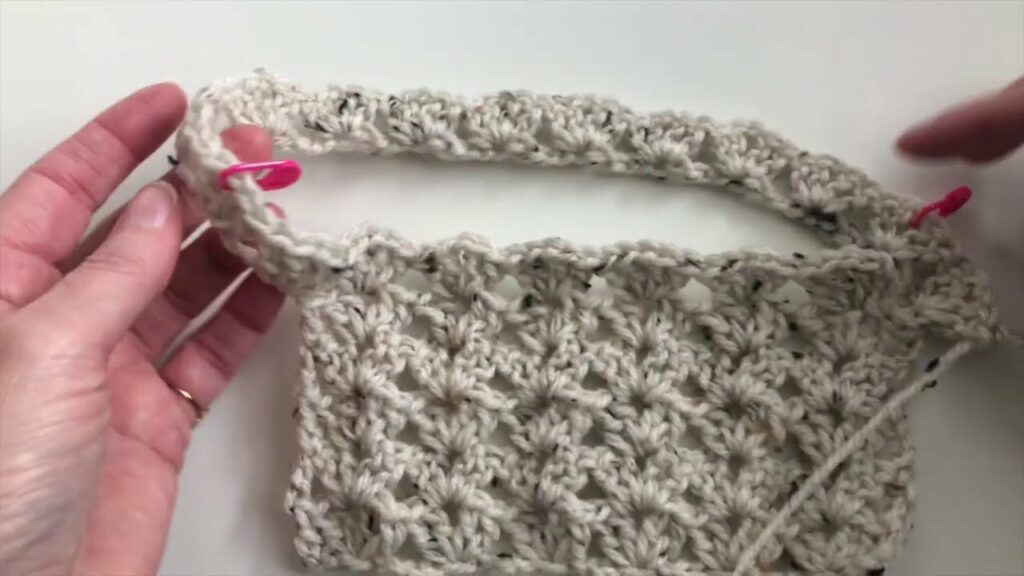
Phase 3: The Romper Body (Waist to Crotch)
This section forms the main body of the romper.
- First Body Row: Ch 3. Work dc in each dc across, including working 1 dc into each chain of the underarm chains. Continue working flat, extending the back opening if your pattern dictates.
- Shaping for Diaper Room:
- Work a few more rows of dc. Your pattern may include subtle increases on the sides over a few rows to create extra width for the baby’s hips and diaper.
- Length: Continue working rows until the piece reaches the desired length from the underarm to the beginning of the crotch shaping (or the point where the legs split).
- Back Opening Buttonholes: Continue creating buttonholes on the back opening band as needed for the full length of the back.
Phase 4: Shaping the Crotch & Dividing for Legs
This creates the leg openings for the bloomer style.
- Crotch Shaping: Your pattern will guide you on how to create the crotch curve. This often involves working short rows, or binding off a few stitches in the center front and back to create the desired crotch width.
- Dividing for Legs: Once the crotch is shaped, you will divide the stitches to form two separate leg openings. Place the stitches for one leg on a holder, and work the first leg.
Phase 5: The Bloomers/Legs (Make 2)
Each leg is worked separately, often in the round.
- Attach Yarn: Attach yarn to one leg opening.
- Pick Up Stitches: Pick up stitches evenly around the entire leg opening, including any stitches along the crotch curve. Join with a sl st to the first st (now working in the round).
- Working the Leg: Work rounds of dc (or your main stitch) for the desired length of the bloomer leg.
- Taper (Optional): If you want the legs to narrow slightly, work a few decrease rounds (e.g., K2tog or SSK equivalents) spaced evenly.
- “Alice” Ruffle Leg: Before the final few rounds, increase significantly (e.g., 2 dc in every 2nd or 3rd stitch) to create fullness for a ruffle. Then work 1-2 rounds of Shell Stitch or Picot edging.
- Leg Cuff/Edging: Work 2-3 rounds of sc or hdc for a neat cuff, or apply an “Alice” ruffle edging directly. Fasten off.
- Repeat: Repeat for the second leg.
Phase 6: “Alice” Aesthetic Details & Finishing

This is where your romper truly comes to life!
- Ruffles/Lace Edging (Crucial for “Alice” look):
- Around the Hem: If you opted for simple leg cuffs, you can add a shell stitch or picot edging around the romper’s main hemline or sleeve openings.
- Ruffle Instructions (Simple Shell): Attach yarn to the desired edge. Ch 1. Skip 1-2 stitches, work [5 dc] into the next stitch. Skip 1-2 stitches, sl st into next stitch. Repeat around. Adjust skips and dc count for desired fullness.
- Collar (Optional, but highly “Alice”!):
- Pick up stitches evenly around the entire neckline (including the back opening bands).
- Work 1-2 rows of sc or hdc.
- For a Peter Pan Collar: On the next row, work increases evenly around the outer edge (e.g., 2 sc in every 3rd or 4th stitch) to make it flare out. Work 1-2 more rows with increases, or work a delicate lace edging like shell stitch for a frilly look.
- For a Small Stand-Up Collar: Work in fpdc/bpdc for a ribbed effect, no increases.
- Shoulder Straps (If sleeveless): If your romper pattern was designed to be sleeveless, pick up stitches on the shoulder edge and crochet simple straps (rows of sc/hdc) to the desired length.
- Button Bands & Buttonholes: Ensure you have enough buttonholes on the back opening and (if applicable) at the crotch for easy diaper changes. Sew on your small, delicate buttons securely.
- Weave in All Ends: Use your tapestry needle to meticulously weave in every loose yarn tail for a professional finish.
- Blocking (The Magic Step!):
- Gently wash your finished romper according to your yarn’s care instructions (often lukewarm water and a gentle soap).
- Gently squeeze out excess water (do not wring).
- Lay the romper flat on clean towels or blocking mats. Gently shape it to the correct dimensions for its size, smoothing out any unevenness and opening up any lace or shell patterns. Use rust-proof pins to hold it in place.
- Allow the romper to air dry completely. Blocking is essential for setting the shape, evening out stitches, and enhancing the drape and elegance.
- Bow Accents (Optional): Crochet a simple bow by chaining a length, working a few rows of sc, then tying into a bow shape. Or, simply use a ribbon. Securely stitch it to the romper (e.g., at the neckline, waist, or on a strap).
Tips for “Alice” Romper Success:
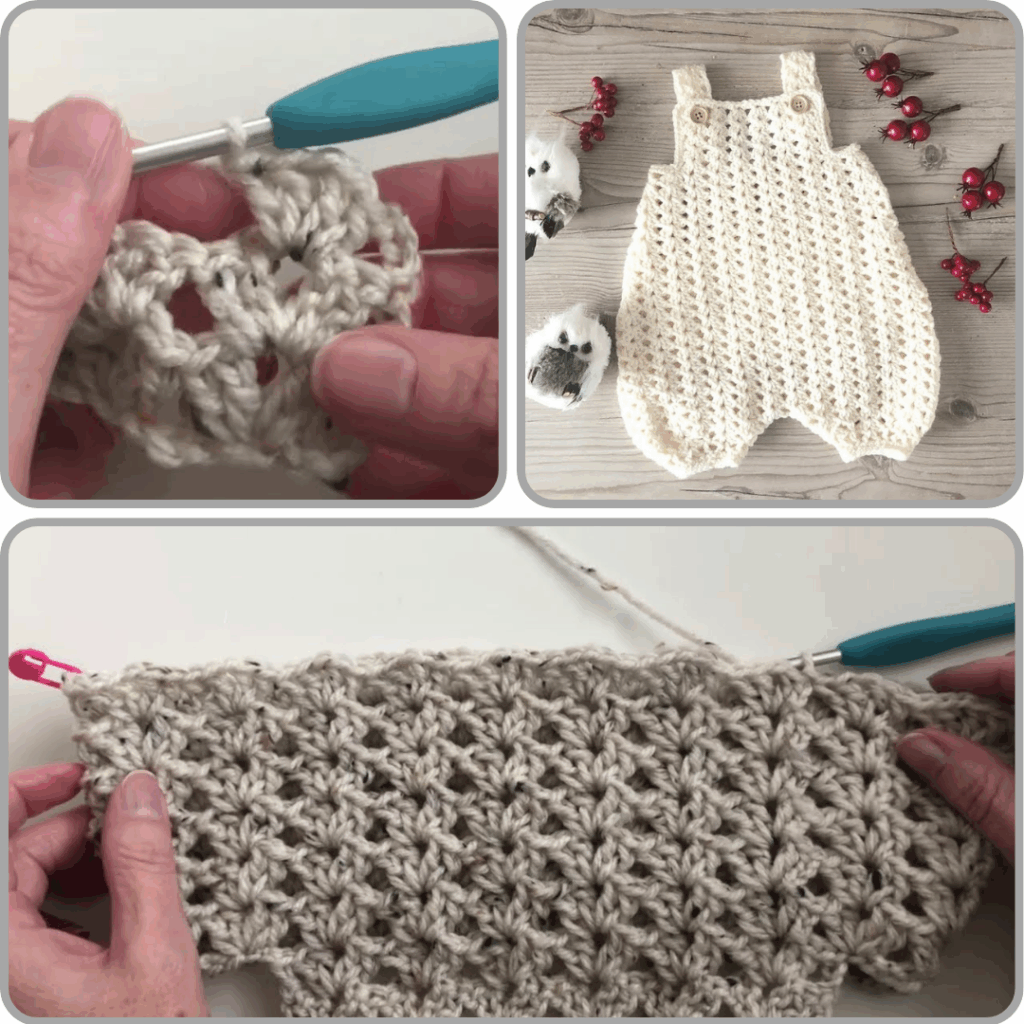
- Gentle Tension: Aim for a soft, relaxed fabric that’s comfortable against baby’s skin.
- Measure Frequently: Babies grow fast! Regularly measure the romper against a well-fitting garment or against the baby (if possible) to ensure proper sizing.
- Seamless Construction: Prioritize top-down seamless methods when possible to minimize bulky seams that could irritate baby’s skin.
- Invest in Quality Yarn: Soft, baby-friendly yarn makes all the difference in the final feel and comfort of the romper.
- Refer to a Specific Pattern: While this guide provides the methodology, a detailed crochet pattern for a baby romper in your chosen size will give you the precise stitch counts, increase/decrease rates, and specific design details for the “Alice” aesthetic.
Care Instructions for Your Handmade Romper:
- Match Yarn Care: Always follow the care instructions on your yarn label (e.g., machine wash cold gentle cycle, or hand wash).
- Reshape and Lay Flat to Dry: Gently reshape the romper while wet and lay it flat on a clean towel or drying rack. Do not hang, as this can stretch the fabric.
video tutorial :
Creating an “Alice” inspired crocheted baby romper is a labor of love that results in a truly enchanting garment. It’s a joy to make and an even greater joy to see on the little one, bringing a touch of storybook magic to their everyday wear. Happy crocheting!
